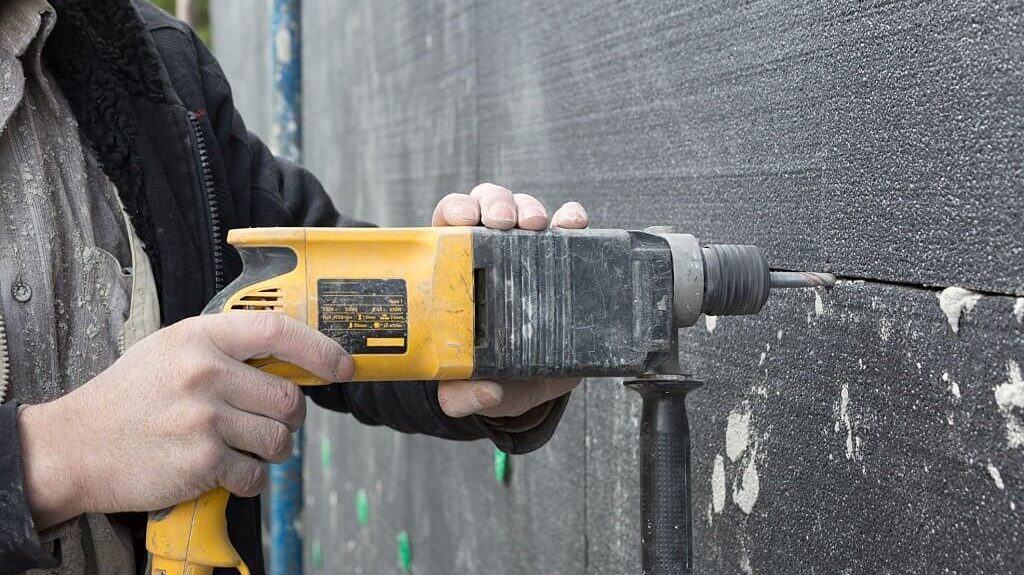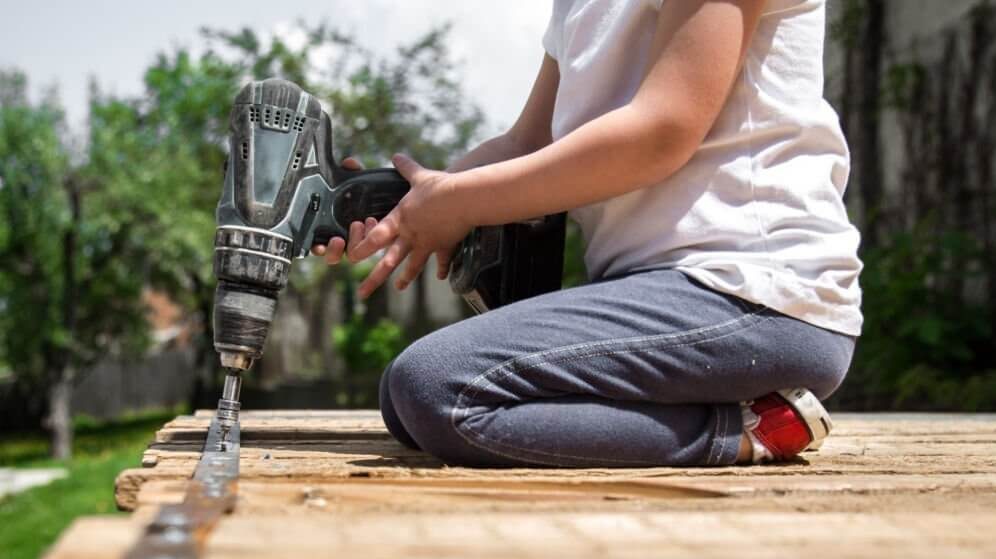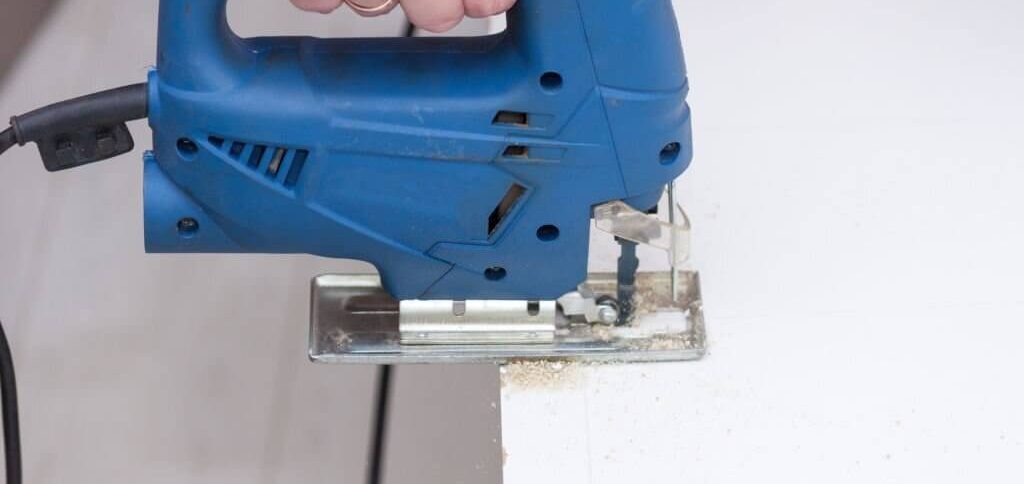If you drill into concrete, the driller will need to be more careful to avoid chipping the material out or cutting it off. Consequently, you might ask yourself: How near the concrete’s edge can you drill? Be at ease.
Our research has been conducted to find your answers. Please avoid drilling more than 6 to 8 cm below the concrete line.
This is done so that no cracks will appear in the concrete. This article covers some basic techniques for drilling in concrete. You’ll also learn to drill in concrete.
Drilling into concrete is a job that requires precision, patience, and the right kind of tool. With the correct drill press, you can achieve professional-looking results with ease – however, it’s important to make sure that you know exactly how close to the edge of your concrete surface you should be drilling!
We’ll discuss everything about proper technique for drilling in concrete, from choosing the right bit for your material to understanding when it’s best to move further away from an edge or corner. If you’re looking for expert advice on how close to the edge of concrete you can safely drill with your drill press, then read on!
How Close To The Edge Of Concrete When Drilling?
When installing concrete or fixing railings you can drill the screws for a secure fit. But it should be kept in mind as you drill closer to the edges of the cement the higher your chance you’re going to crack it. Most professionals recommend keeping the concrete level within 4 inches to prevent cracks.
If it’s impossible to stop it can be cut at a distance of two inches. Consider some helpful tips. Then turn off your Hammer action on a hammer drill.
Some Basic Techniques for Drilling in Concrete
1. Mark Down the Areas for Drilling
Next, we need to start planning. You don’t simply drill a hole in the wall without measuring. Use the ruler and make the marks with a pencil. Check again for faulty results.
2. Drill Right Through the Wood
Masonry tools can also drill through wood; therefore do not be afraid of drilling directly through it into walls or slabs. So you have a much easier job of getting your furs on wherever it is. Drill the holes and fix them with a screwdriver. (It is easier if the first hole goes in towards the center.) .
3. Drill/Bit Combo Speeds Up the Process
Installation of concrete screws becomes much easier if you use combination tools like these. The drill bits have removable sleeves which are stuffed with the driver. It’s easy to switch from drill bit to drive.
4. Use A Hammer Drill
Sometimes a drill is considered a normal drill suited to complete a specific project you planned. Eventually, you will realize how inefficient this is. The Hammer drills will give you maximum productivity and efficiency while reducing the cost of the drill itself.

Although expensive this product can last a lifetime if taken properly cared for. And a rental can be easily purchased. See Hammer & Hammer drilling on Amazon.
5. Drill A Deep Enough Hole
Many beginners make mistakes in their jobs as well. The screw will not fit properly inside the screw when its depth is low. When they are too deep they reduce their strength. Likewise, most hammered machines feature adjustable stopping depth.
Essentially a feature that helps you determine exactly how deep you should be drilling, So when drilling in concrete it’s advisable to drill one-third of an inch deeper than the screws that you are going to put in. The screw can get into the space without worrying that the screw will get stuck or because it is rusting.
6. To Help Speed Up the Process, Use Two Drills
Two drillers with hammers! You cannot change bits and pieces at any time to accomplish the task. If the price is low, consider buying a set of tools to accelerate the installation and reduce the time it takes to repair.
They are cheaper and can easily switch between drills and drive modes. See the concrete installation kits on Amazon.
7. Don’t Drill too Close to the Edges
The first mistake to avoid is to break off the piece from the concrete staircase and crack the corner on the patio. Do not drill more than four feet away for safety purposes. On a cliff If it can’t be done, then stop hitting it.

Keep away from wedges or anchors. The pressures exert an incredibly large force of outward pressure, literally “wedges the concrete fasteners”
8. Hydraulic Cement Prevents Cracking
During laying rebar or posts, drill holes in the concrete with hydraulic cement to make sure they are secure in place. Hydraulic cement is highly durable and weatherproof. It’s a resilient material that can withstand repeated movements and that’s how the professional installation of metal supports uses them for fixing posts.
Hydraulic cement is available in powder and requires mixing with water. Soak (no filling) holes in the spray jar. Otherwise, moisture is pumped out from around the concrete layer. So you have everything prepared for mixing – it should dry in 3-6 minutes.
This will prevent cracking and make the posts stronger. You can also use standard cement if you’d need to fix or stabilize a heavy object like steel rebar.
Finally, be sure to use safety glasses when drilling and hammering concrete to protect your eyes from dust and flying particles. With these tips, you’ll be able to regularly drill through concrete with ease.
Also Check: How to Use a Drill Press Step by Step?
What is the Minimum Edge Distance for Core Drilling Concrete?
The minimum edge distance for core drilling concrete is determined by the size of the hole being drilled and the strength of the concrete. Generally, a minimum distance of 3 to 4 inches is recommended to ensure that the drill masonry bit does not penetrate through the outer surface of the concrete.
This can help prevent damage and other potential problems that could occur when drilling a hole in the concrete. It is also important to note that this distance should be maintained at all times during the core drilling process.
Depending on the size of the hole being drilled, larger or smaller edge distances may need to be observed as well.

Additionally, it is always best practice to follow any safety guidelines provided by the manufacturer of the core drill for the best results.
Close to Edge of Concrete Can you Drill FAQs
What You Should Know About Concrete Screws
It’s simple to drill holes with concrete screws like wood screws and screw them. It works excellently to fasten shelves to pipes, wires, electrical boxes, or furring strips.
Concrete screws do not function well in sagging concrete. Their holding power is lost by being discarded or reused in a hole.
How Close Can Anchor Bolts be to the Edge of Concrete?
Anchor nuts have a minimum thickness of 178mm (77 inches). Anchor bolts should extend at least 3/8 inches (45mm) from a surface parallel to the wood sill plate.
How Close to the Edge of the Concrete can you Put Tap Con?
At a maximum distance of 3/8″ from the unsupported edge, the loads are 25% for each width. Similar to tension loadings, 75. Retracted from the light concrete. Installing Tap cons is relatively easy. It is accomplished in 2 steps.
How Close can you Drill to the Edge of a wall?
1/2 inch on the top and 1/3 on the bottom, Not much trouble for the studs. A hole in a wall can cause a serious problem.
Conclusion
Drilling near the edge of concrete can be a tricky task. It’s important to make sure you maintain a safe distance from the edge, allowing for a margin of error as well as enough area to prevent too much energy from accumulating along one area and transferring into the concrete.
Take precautionary measures by using different drills or even diamond drills or equipment if needed. Finally, make sure to take the proper safety protocols, invest in the right kind of protective equipment, and adjust your technique accordingly.
Drilling should always be done in close collaboration with knowledgeable professionals and with competent assistance that can guarantee that everything will be done safely and correctly.
By having an expert to ensure your job is done right, you can avoid costly repairs and unnecessary harm to your property.




